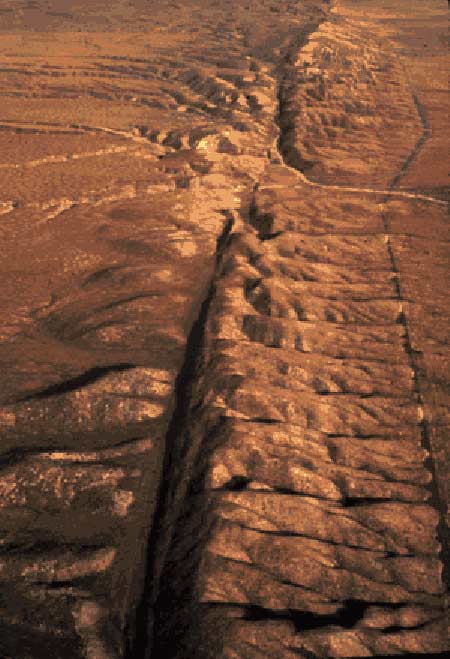Large California Earthquake Possible Within 30 Years, Geologists Warn

The San Andreas Fault, which snakes uncomfortably close to Los Angeles and other large cities along much of California's length, has been relatively quiet for the past 148 years.
This could end soon, scientists said today.
Researchers have calculated a 20 to 70 percent probability that southern California will be hit by a large earthquake in the next 30 years. The forecast is based on the frequency of past events.
Geologists stress, however, that earthquake prediction, in its infancy, is notoriously difficult. Forecasts tend to be very general, specifying a range of decades rather than years or weeks for possible activity.
The last really big quake to hit southern California was the Fort Tejon Earthquake of 1857, which was estimated to be around magnitude 8 from the 186 miles (300 kilometers) of rupture along the San Andreas. A smaller temblor occurred in 1812, disrupting about half as much of the fault.
But these historical events do not provide enough data to estimate the frequency of large quakes. So scientists turn to the much longer geologic record.
"What we are looking for is layered sediments that cross the fault and are disrupted," said Tom Fumal of the U.S. Geological Survey's Earthquake Hazards Team.
Sign up for the Live Science daily newsletter now
Get the world’s most fascinating discoveries delivered straight to your inbox.
Disruptions in the sediment - which include vertical offsets, folding, and cracks - imply at least a magnitude 6 earthquake.
"We think we are dealing with mostly magnitude 7 or larger," Fumal told LiveScience.
Scientifically speaking, temblors this big are considered "large."
Fumal and his colleagues have examined the geologic record along 340 miles (550 kilometers) of the southern fault line. Over a span of about 1,600 years, 56 prehistoric earthquakes have been identified, but some of these may be multiple recordings of the same event.
"Most of the fault ruptures every 200 years, but because of the uncertainty in dating, we cannot tell whether it was one earthquake or a number of closely-timed earthquakes," Fumal said.
The research team was able to match the paleoseismology data with different models. They found that "the current 148-year hiatus is probably not exceptional," but no lull in large seismic activity has lasted more than about 200 years.
The geologists have determined the probability that the lull will end in the next 30 years. Depending on the model, the next rupture - which will likely affect a substantial portion of the fault line - may be one great earthquake (magnitude greater than 8) or a series of large earthquakes.
With more research, the scientists expect that they will be able to decide which of their models is a better representation of the San Andreas.
The study is reported in the May 13 issue of the journal Science.
Related Stories
- Central US Warned of Larger Earthquakes to Come
- Ominous Rumbling Under San Andreas Fault
- Deadliest Earthquakes in History
- Quake Death Toll in 2004 Could Be Worst Since 1556
- Crumbled Tombstones Lead to New View of 1906 Earthquake
- New Method Promises Better Earthquake Prediction
Earthquake Frequency
Average number each year globally:
Top 10 U.S. Quakes
LiveScience / SOURCE: USGS










